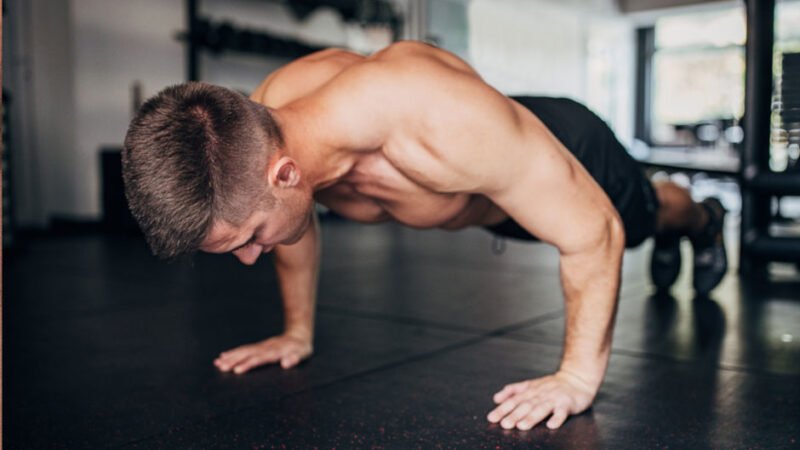Most fitness lovers have a problem developing their upper chest. They often realize that standard push-ups only work the middle and lower pecs. The upper chest, also known as the clavicular head of the pectoral major, responds best to certain angles and positions. This guide will show you the top push-ups for upper chest. You can build a strong, defined chest using just bodyweight exercises.
Focusing on your upper chest with the right push up techniques can transform your physique. It can also boost your pushing power. This article covers methods that help you stimulate your muscles effectively. You will boost your workout productivity and get the balanced chest development that many lifters want, but few achieve with regular training.
Grasping the Anatomy and Action of the Upper Chest
The pectoral major has two heads. You can target each head with different angles and exercises. They work together, but you can emphasize them separately. The major part is the sternocostal head, which originates on the sternum and costal cartilages. The clavicular head is part of the upper chest. It comes from the medial third of the clavicle and connects to the humerus with the other head.
These two heads differ in some actions as well as fiber arrangement. The muscular action in question is shoulder flexion, along with raising the arm from a downward position to an elevated one. Because of this anatomical difference, it is easy to see why incline movements are crucial for upper chest development. At the same time, flat or decline push-ups focus mainly on the sternocostal head.
Muscle Fiber Orientation and Activation
The upper chest muscle fibers have an upper lateral inclination of around 30 to 45 degrees from the horizontal. To maximize the recruitment of these fibers, apply resistance against their natural pull. Doing push ups on a horizontal plane mainly activates the horizontal fibers of the sternocostal head. It lightly stimulates the clavicular head.
Problems with Traditional Push-Up
Standard push-ups are excellent for chest strength and fitness. However, they have a key limitation: they do not fully activate the upper chest. When you do traditional push-ups, your body stays horizontal. This position mainly targets the sternocostal head of the chest, while the clavicular head receives less attention.
The angle of force in regular push-ups is like a flat bench press. Studies show that flat bench presses are not as effective for building the upper chest compared to incline presses. It becomes clear for those who have done push-ups for a long time but notice their upper chest is not developing well.
Additionally, standard push ups lack variety. As your strength grows, the lower chest becomes easier without any change in difficulty. Since the angle of resistance and force application remains the same, the upper chest does not get enough stimulation for optimal growth.
Decline Push-Up: The Best Upper Chest Builder
The decline push up is the most effective bodyweight exercise for developing the upper chest. It further modifies the traditional push up so that it becomes a hypertrophy exercise for the upper pectorals. In decline push ups, your feet are higher than your hands. This angle helps work the clavicular head of the pectoralis major. It also keeps the benefits of regular push up training.
Decline push-ups, in particular, may provide many benefits relative to other forms of push-ups. For one, they enhance the workload of the upper body as greater amounts of body weight are distributed toward the hands and chest. Additionally, the combined load, along with the ideal angle for upper chest activation, provides an exceptional stimulus for growth and strength in the often-overlooked clavicular head.
Progressive Elevation Techniques
Using progressive elevation techniques targets the upper chest and helps you improve strength over time. Start with a modest elevation of 12 to 18 inches on a stable surface, like a couch, bench, or step platform. This height changes the angle enough to engage the upper chest while keeping proper form.
To progress successfully, maintain perfect practice at any height. Even with elevated foot placement, keep a straight body, an engaged core, and controlled motion. Never compromise technique, even when trying to make the exercise more challenging.
Taking Your Upper Chest Training to the Next Level
To build great upper chest strength with decline push-ups, good form is just the start. Advanced practitioners can explore many progressions and adaptations. These methods target the upper chest. They also keep the benefits and ease of bodyweight workouts.





